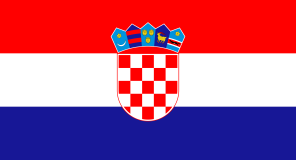Croatia
Green Hydrogen Vision
Croatia’s green hydrogen vision focuses on leveraging its renewable energy potential to support the transition to a sustainable, low-carbon economy. The strategy emphasizes producing and integrating renewable hydrogen into key sectors like industry, energy, and transport, aiming to replace fossil fuels and improve energy system flexibility. Croatia is committed to fostering innovation, developing hydrogen infrastructure, and supporting education and research to enhance the adoption of hydrogen technologies. Through collaboration with EU initiatives like the Northern Adriatic Hydrogen Valley, the country seeks to become a regional leader in hydrogen production, storage, and export while contributing to the EU’s climate neutrality goals by 2050.
National Strategy
The 2022 Croatian Hydrogen Strategy until 2050 outlines a comprehensive framework to establish a hydrogen-based economy, aligning with the European Green Deal and Croatia's Energy Development Strategy. The document prioritizes renewable hydrogen production, infrastructure development, and the integration of hydrogen across industries, transport, and energy systems to achieve climate neutrality by 2050. The strategy outlines a long-term vision for integrating hydrogen into its energy transition. It focuses on developing renewable hydrogen as a cornerstone of decarbonization across key sectors such as energy, transport, industry, and agriculture. The strategy aligns with the European Green Deal and national energy policies to reduce CO2 emissions and increase energy efficiency.
Key Elements:
Infrastructure Development:
- A robust hydrogen storage, transport, and distribution network will be established, including converting existing natural gas pipelines.
- Hydrogen valleys and hubs will be prioritized to foster regional development and export capabilities.
Innovation and Education:
- Research and development will focus on improving hydrogen production efficiency and developing advanced storage and transport technologies.
- Educational programs and public awareness campaigns will prepare skilled professionals and foster acceptance of hydrogen technologies.
International Collaboration:
- Croatia aims to position itself as a hydrogen transit hub, linking Southern and Eastern Europe with broader EU markets.
The strategy sets ambitious but achievable goals to promote sustainable development, create economic opportunities, and integrate Croatia into the European hydrogen economy.
Capacity Targets
Electrolyser Capacity:
-
Install 70 MW of electrolysis capacity by 2030 and scale up to 2,750 MW by 2050 under a baseline scenario.
-
Accelerated scenario projects up to 1,270 MW by 2030 and 7,330 MW by 2050.
Renewable Hydrogen Production:
-
To produce hydrogen using advanced technologies, focus on renewable energy sources, such as wind and solar.
Infrastructure Development:
-
Convert existing natural gas pipelines for hydrogen transport.
-
Develop hydrogen storage facilities, including underground options.
Impact Targets
Decarbonisation:
-
Substantial reductions in CO₂ emissions across high-intensity industries, transport, and energy systems.
-
Integrate hydrogen into hard-to-abate sectors like petrochemicals, steel, and cement.
Sectoral Integration:
-
Hydrogen will be key in decarbonizing heavy industries, the transport sector, and energy storage systems.
-
The strategy envisions hydrogen-powered vehicles, trains, and ships alongside synthetic fuels for aviation and maritime transport.
Energy Security:
-
Use hydrogen for energy storage, ensuring grid stability and the integration of renewable sources.
Economic and Innovation Impact:
-
Foster research and innovation in hydrogen technologies, including electrolysers and fuel cells.
-
Create opportunities for new industries and job growth.
Policy and Project Spotlight
- By 2030, Croatia aims to produce and consume 26,400 tonnes of renewable hydrogen annually. The country is advancing its commitment to green hydrogen by implementing 32 pilot projects as part of an ambitious Hydrogen Strategy to transition to a low-carbon economy by 2050. This initiative, detailed in a study by the Croatian Hydrocarbon Agency, seeks to develop a comprehensive framework for hydrogen production and utilisation throughout the country. Among these projects, six play a crucial role in the North Adriatic Hydrogen Valley initiative, designed to lead the region's shift to hydrogen energy. Major Croatian cities, such as Zagreb, Split, Osijek, and Rijeka, are expected to be early adopters, incorporating hydrogen-powered solutions into their public transport systems. Although the current costs of renewable hydrogen present a challenge for maintaining affordable public transport, the study suggests that implementing CO2 taxes on fossil fuels or initially subsidising hydrogen costs could help alleviate these expenses.
- Ohmium International, a leader in green hydrogen technology, has been chosen to supply Proton Exchange Membrane (PEM) electrolysers for Croatia's first green hydrogen project. In partnership with IVICOM, this initiative involves constructing a 10 MW hydrogen plant at the INA Rijeka Refinery. The project will integrate PEM electrolysers with a new solar power plant to produce green hydrogen, supporting decarbonization efforts at the refinery and providing sustainable fuel for Croatia's transportation sector. It is backed by the Croatian government's Recovery and Resilience Facility. It aligns with the National Hydrogen Strategy, which aims for 70 MW of hydrogen production by 2030 and 2750 MW by 2050 to achieve climate neutrality.
Financing
The Croatian Ministry of Economy and Sustainable Development is rolling out a subsidy programme for investments in fuel supply infrastructure. Over the next three years, it has prepared for the construction of hydrogen filling stations, plus the expansion of e-charging infrastructure for vehicles. The scheme aims to increase the use of renewable energy in transport and accelerate the sector's decarbonisation with electricity and hydrogen. The programme has a budget of EUR 29.6 million, with a significant part of the funding (EUR 23 million) earmarked for the hydrogen stations, which will be operational for cars, buses and trucks. The expectation is to install at least six units by 2026, with a capacity of at least 100 km each, but with the possibility for expansion. Around 65% of the funding will be rolled out this year (EUR 15 million), and the remaining proportion will be available in 2026.
Government Green Hydrogen Lead
Ministry of the Economy and Sustainable Development
